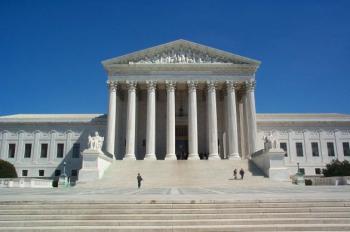An Overview of the 10th Amendment
 Tenth Amendment: Principle of Federalism through the provision of powers not granted to the federal government nor prohibited to the individual states.
Tenth Amendment: Principle of Federalism through the provision of powers not granted to the federal government nor prohibited to the individual states.
What is the Tenth Amendment?
The powers not delegated to the United States by the Constitution, nor prohibited by it to the States, are reserved to the States respectively, or to the people.
The Tenth Amendment Defined:
The Tenth Amendment is fairly similar to an earlier provision outlined in the Articles of Confederation which stated that each individual state shall retain sovereignty, independence, freedom, while possessing every power, right, and jurisdiction that is not expressly delegated to the greater governing body of the United States. Following the ratification of the Constitution, framers wanted a similar amendment to limit the federal government to only powers delegated, meaning the denial of implied powers.
The First Amendment is a part of the Bill of Rights, which are the first 10 Amendments to the United States Constitution and the framework to elucidate upon the freedoms of the individual. The Bill of Rights were proposed and sent to the states by the first session of the First Congress. They were later ratified on December 15, 1791.
The first 10 Amendments to the United States Constitution were introduced by James Madison as a series of legislative articles and came into effect as Constitutional Amendments following the process of ratification by three-fourths of the States on December 15, 1791.
Stipulations of the Tenth Amendment:
The Tenth Amendment was instituted in the Bill of Rights to ensure that the federal government would only exercise the powers that were stated as permissible in the Constitution. All other powers that are not directly referred to in the United States Constitution were delivered to the individual states.
Commercial Clause:Clause within the Tenth Amendment stating that Congress has power to regulate commerce with foreign nations, and among several states, as well as with Indian Tribes
The Taxing and Spending Clause: States that Congress possesses the power to lay and collect taxes, duties, excises, imposts, to pay debts and provide common defense and general welfare to citizens of the United States.
The Necessary and Proper Clause: States that Congress possesses the power to make all laws which are considered necessary and proper for carrying into execution as well as all powers vested by the Constitution.
Funding: The federal system effectively limits the ability of the federal government to use state governments as well as their funding to benefit the national government. That being said, Congress maintains the power to implement programs, or to instill regulations, where there are sound justifications for the national government to utilize the States to become instruments of national policy.
The 10th Amendment is often cited and exercised for state laws concerning the use of medicinal marijuana, firearms, state taxes, and other laws which are unique based on individual state law.
State Timeline for Ratification of the Bill of Rights
New Jersey:November 20, 1789; rejected article II
Maryland:December 19, 1789; approved all
North Carolina:December 22, 1789; approved all
South Carolina: January 19, 1790; approved all
New Hampshire: January 25, 1790; rejected article II
Delaware: January 28, 1790; rejected article I
New York: February 27, 1790; rejected article II
Pennsylvania: March 10, 1790; rejected article II
Rhode Island: June 7, 1790; rejected article II
Vermont: November 3, 1791; approved all
Virginia: December 15, 1791; approved all
Georgia, Massachusetts and Connecticut did not ratify the first 10 Amendments until 1939
Related Topics
- Slavery Overview
- The Call for Federalism Overview
- Jones Act Text
- An Overview of the 16th Amendment
- An Overview of the 9th Amendment
- Wiretapping Overview
- A Complete Overview of Amendments
- An Overview of the Constitution Of The United States
- Supreme Courts Criticisms Overview
- Bicameral Legislature Background Overview